The Huntington’s blog takes you behind the scenes for a scholarly view of the collections.
To Mother, With Love
Posted on Fri., May 9, 2014 by
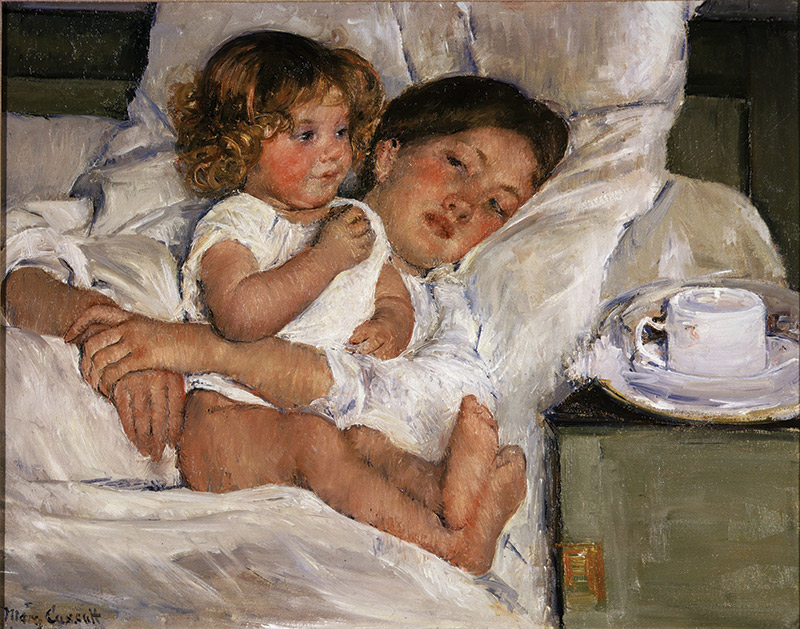
Mary Cassatt's Breakfast in Bed (1897) is one of the best-loved mother-and-child portraits at The Huntington. But there are other works in the collections that explore the same theme, and they're well worth seeing—especially on Mother's Day.
The tender bond between mother and child is one of the most enduring themes of art, and works depicting maternal love are well represented at The Huntington. If you're visiting the galleries with your own mom or kids this Mother's Day weekend, here are some works you won't want to miss.
Perhaps the most important painting in the collection is Rogier van der Weyden's 15th-century masterpiece Virgin and Child, on view on the second floor of the Huntington Art Gallery. It portrays a tranquil and radiant Madonna gently supporting the baby Jesus. "This painting contrasts with particular poignancy the loving, contemplative gaze of the mother with the lively childlike action of the infant Christ, who plays with the clasp of the book," notes Catherine Hess, The Huntington's chief curator of European art. (Hess co-curated the 2013 exhibition "Face to Face: Florence, Flanders, and Renaissance Painting," which spotlighted the van der Weyden portrait.)
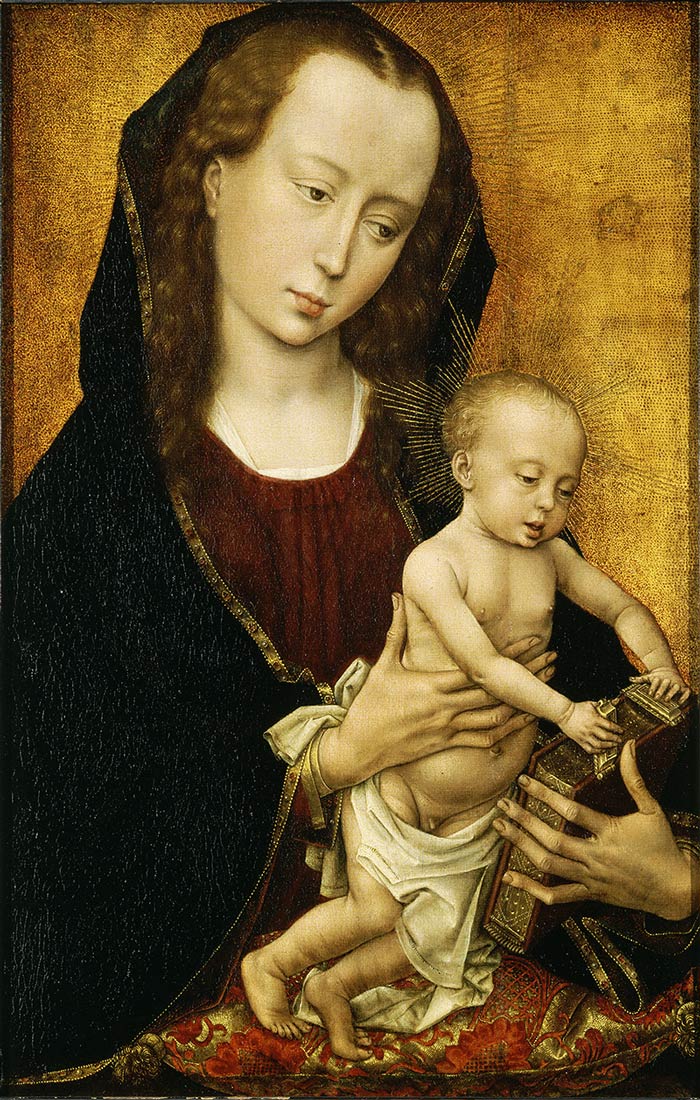
Rogier van der Weyden's masterpiece Virgin and Child is considered by many to be the most important painting in the collection.
A 19th-century "madonna" gazes with drowsy contentment at her child in one of The Huntington's best loved paintings, Mary Cassatt's luminous Breakfast in Bed (1897), on view in the Virginia Steele Scott Galleries of American Art. Cassatt was born in the United States but spent most of her life in France, where she became close friends with the French Impressionists. In the 1880s she took up the subject that absorbed her for the rest of her career: the mother-and-child bond. She often dealt with the nuances of the intimate relationships between women and children—much as van der Weyden had done in his portrayal of Mary and Jesus.
Sculptors, too, have taken up the theme in works of bronze, marble, and terra cotta. Two notable examples from the collection are the charming, 18th-century terra cotta Woman Playing With a Child by the French sculptor Claude Michel, known as Clodion; and American artist Bessie Potter Vonnoh's bronze Young Mother from 1899. These works can be seen in the Huntington Art Gallery and the Scott Galleries, respectively.
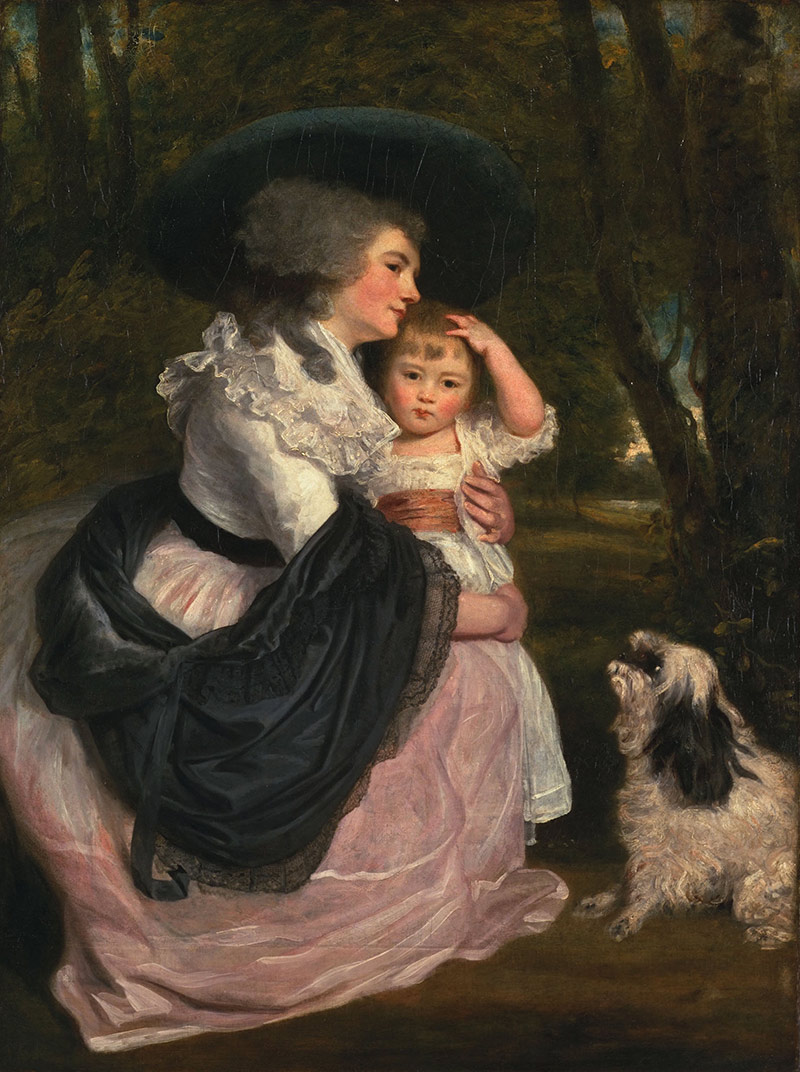
Was maternal affection just a fashionable pose? Lavinia, Countess Spencer, and her Son, Viscount Althorp(ca. 1783-84), by Sir Joshua Reynolds.
But some portraits of maternal affection relied on artifice as much art. Not all doting mothers were as absorbed in their offspring as they appear to be on canvas. In Sir Joshua Reynolds' striking portrait of Lavinia, Countess Spencer, and her Son, Viscount Althorp (ca. 1783–84), seen in the Huntington Art Gallery's Thornton Portrait Gallery, the mother enfolds her son in a comforting embrace after he apparently bumps his head. Art historians note, however, that the vivacious Lavinia was a hands-off parent, more concerned with society, politics, and fashion than with childrearing. But an idealization of motherhood occurred in late 18th-century England, and selfless maternal devotion—or at least the outward appearance of it—came into vogue. Reynolds was among the first painters to capitalize on the new fashion for hands-on motherhood by portraying aristocratic women like Countess Spencer in what were often mere poses of motherly affection.
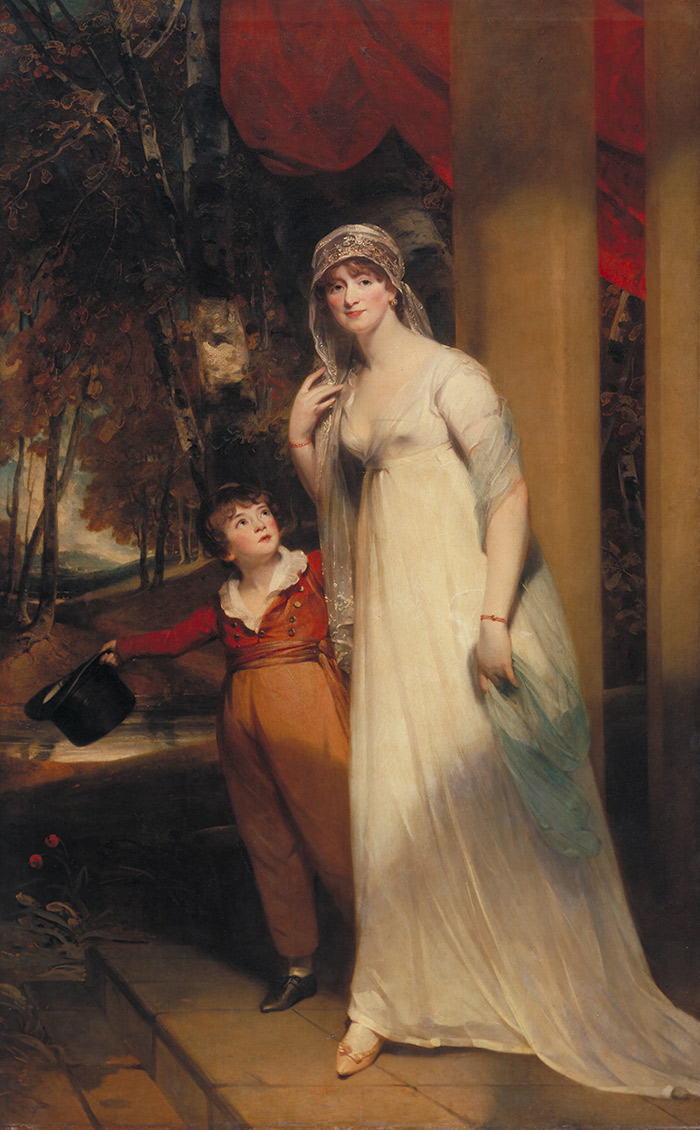
Loving eyes, but for whom? Frances (Woodis) Borlase, later Frances Grenfell, and Pascoe George Norman Grenfell(ca. 1804), by Martin Archer Shee.
There's an even more unexpected backstory to British artist Martin Archer Shee's mother-and-son portrait of Frances (Woodis) Borlase, later Frances Grenfell, and Pascoe George Norman Grenfell (ca. 1804). As the young lad tries to engage his mother's attention, clinging to her side and gesturing down the steps with his pint-sized silk hat, the elegant woman seems to have eyes only for the viewer, and flirtatious eyes at that. Little George, it turns out, was Frances' illegitimate son, and the portrait is believed to have been commissioned by her lover (the boy's father) and not by her husband. Look for this painting in the Huntington Art Gallery.
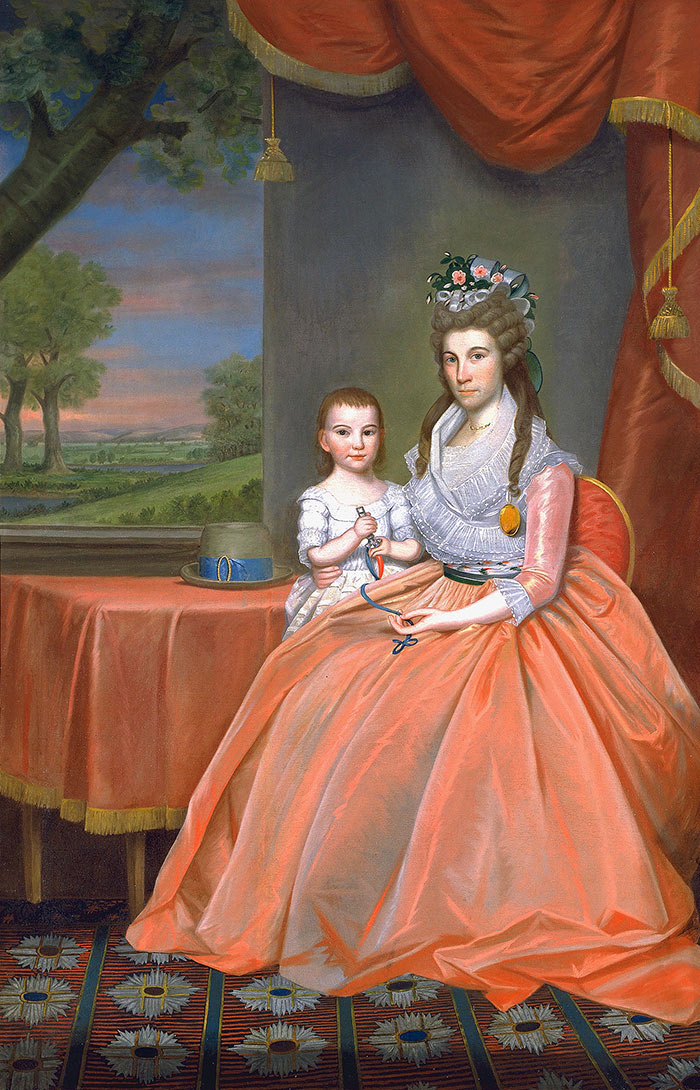
What the doting American mother is wearing this season. Mrs. Elijah Boardman and her Son, William Whiting Boardman(ca. 1796), by Ralph Earl.
Mary Anna Boardman's faithfulness to her husband is undoubted, but American artist Ralph Earl's grand portrait of Mrs. Elijah Boardman and her Son, William Whiting Boardman (ca. 1796) seems less a tribute to doting motherhood than a proud display of prosperity—yards and yards of silk and lace, and a view of extensive grounds in the background. Elijah Boardman was a wealthy Connecticut landowner, and when he commissioned a portrait of his wife and young son he picked the right artist for the job: Earl's success stemmed from his skill at celebrating his patrons' achievements. Material abundance is conveyed in every brushstroke.
And in that gorgeous salmon-pink silk dress and flower-covered hat, Mrs. Boardman would have made a very pretty picture at the most elegant Mother's Day brunch in town.
Lisa Blackburn is communications coordinator at The Huntington.